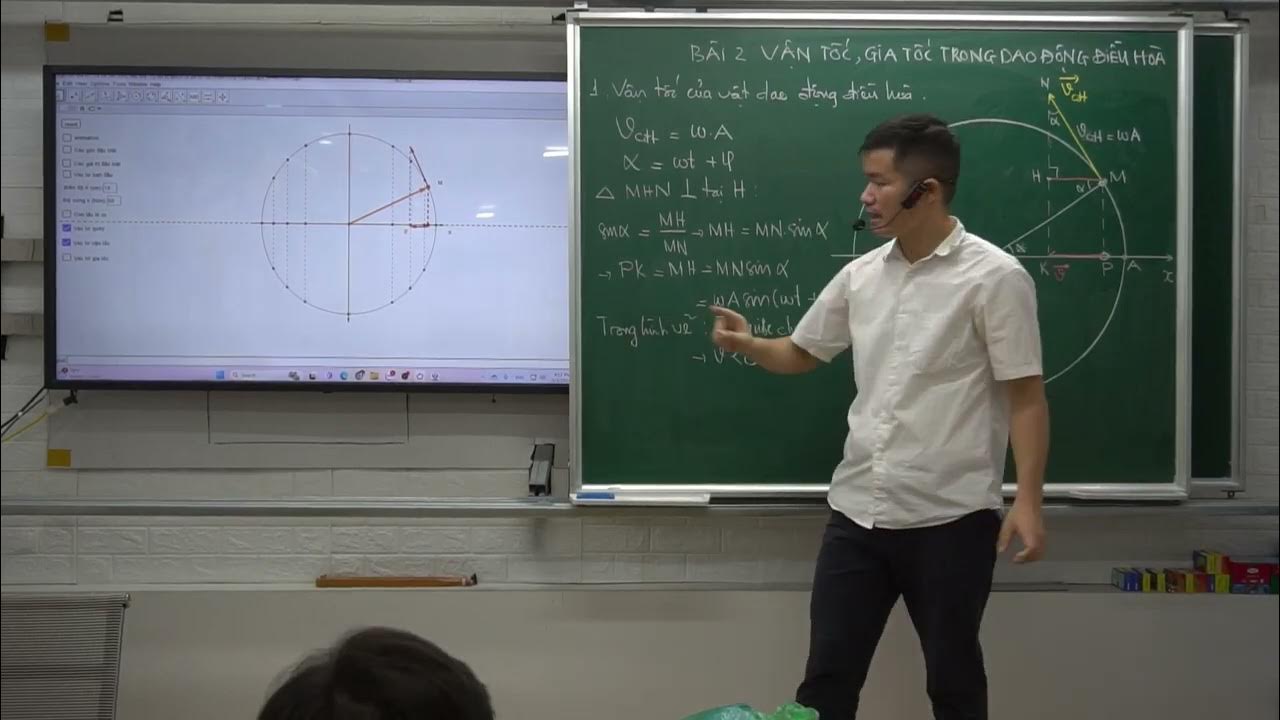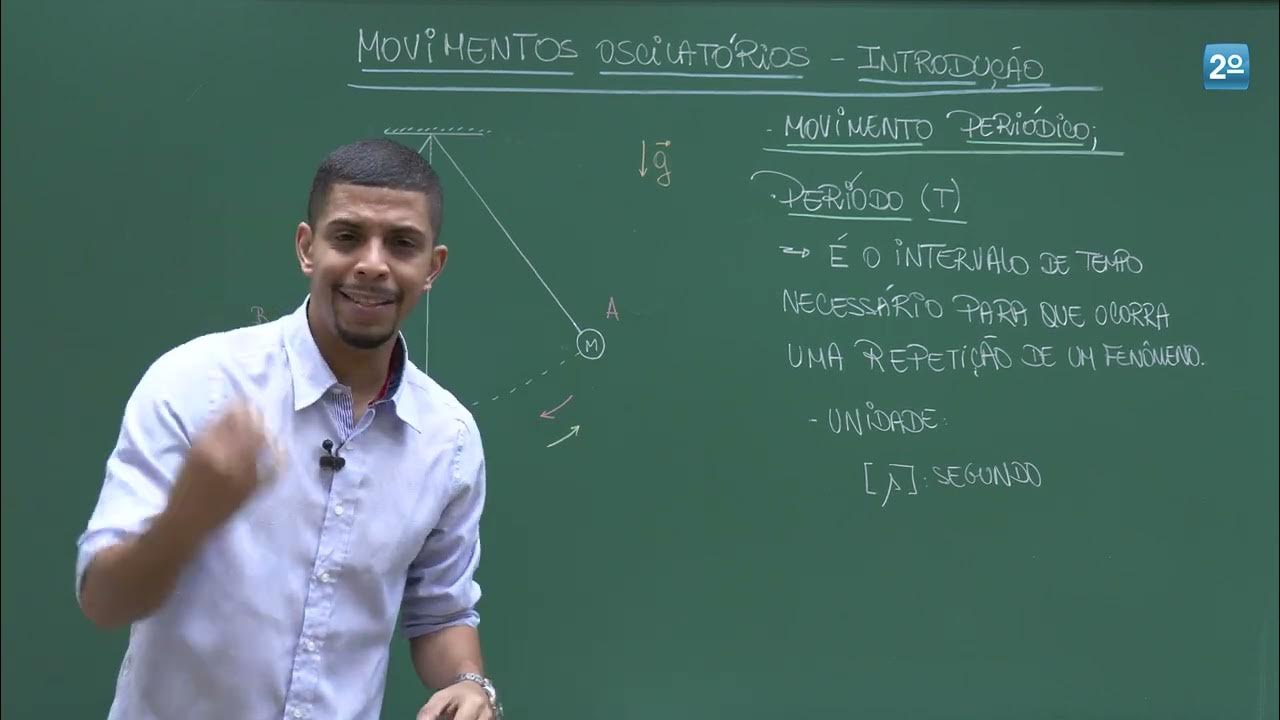Kimia Kuantum - 04A Osilator Harmonik #1 - Klasik
Summary
TLDRThis transcript explains the principles of harmonic oscillation and its relation to both classical mechanics and chemistry. It begins by describing the motion of a spring and how its position is governed by a sinusoidal function. The concepts of force, spring constant, and amplitude are introduced, followed by a discussion on the energy involved in oscillation, including potential energy. The script also makes an analogy to chemical bonds, emphasizing how vibrational motion in molecules can be understood using quantum mechanics. The link between frequency, mass, and spring constant is explored in detail.
Takeaways
- 😀 The harmonic oscillator is described by the equation X(t) = a sin(ωt + b), where 'a' is the amplitude, 'ω' is the angular frequency, and 'b' is a phase constant.
- 😀 The spring force follows Hooke's Law: F = -kx, where 'k' is the spring constant and 'x' is the displacement from equilibrium.
- 😀 The maximum and minimum positions of the oscillator correspond to the largest positive and negative values of displacement, with the amplitude 'a' being the maximum displacement.
- 😀 The total mechanical energy in harmonic motion is conserved, with kinetic and potential energy interchanging throughout the oscillation cycle.
- 😀 The potential energy of the spring is given by U(x) = (1/2)kx², being zero at equilibrium and maximum at the amplitude 'a'.
- 😀 The frequency of oscillation (f) is related to the spring constant 'k' and the mass 'm' by the formula: f = (1/2π)√(k/m).
- 😀 In quantum mechanics, molecular vibrations are modeled as harmonic oscillators, with energy levels quantized and given by E_n = (n + 1/2)hf.
- 😀 The spring constant 'k' determines the stiffness of the system, which directly affects the frequency of oscillation.
- 😀 The restoring force in a spring is directed opposite to the displacement, trying to return the object to equilibrium, as described by F = -kx.
- 😀 This analogy between mechanical oscillators and molecular vibrations helps to understand how bond strength and atomic interactions are governed in chemistry, especially in spectroscopic analysis.
Q & A
What is the concept of equilibrium in the context of harmonic oscillation?
-Equilibrium in harmonic oscillation refers to the position where the object is at rest, with no net force acting on it. In this case, the position is denoted as X0, and any displacement from this point results in oscillatory motion.
How is the motion of a harmonic oscillator described mathematically?
-The motion of a harmonic oscillator is described using a sinusoidal function of time. The position X as a function of time is given by X(t) = a * sin(ωt + b), where 'a' is the amplitude, 'ω' is the angular frequency, and 'b' is a phase constant that accounts for the initial conditions.
What is the significance of the angular frequency (ω) in harmonic motion?
-The angular frequency (ω) determines how rapidly the oscillations occur. It is related to the frequency (f) of oscillation by ω = 2πf. The angular frequency also reflects the stiffness of the system, as it is proportional to the square root of the spring constant (k) divided by the mass (m).
What role does the spring constant (k) play in harmonic oscillation?
-The spring constant (k) represents the stiffness of the spring. A larger spring constant indicates a stiffer spring, which results in a higher angular frequency (ω) and a higher frequency of oscillation. This is analogous to a stronger chemical bond in molecular systems.
How does displacement from equilibrium relate to the restoring force in harmonic motion?
-Displacement from equilibrium generates a restoring force proportional to the displacement. This force is described by Hooke’s Law, F = -kx, where 'x' is the displacement from equilibrium and 'k' is the spring constant. The negative sign indicates that the force is always directed towards the equilibrium position.
What is the relationship between potential energy and displacement in harmonic oscillation?
-The potential energy in a harmonic oscillator is directly related to the displacement from equilibrium. It is given by the formula U = ½kx², where 'x' is the displacement. The potential energy is zero at the equilibrium position and reaches its maximum when the displacement is at the amplitude (maximum displacement).
How does the total energy of a harmonic oscillator behave?
-The total mechanical energy in a harmonic oscillator remains constant throughout the oscillation. It is the sum of the potential energy and kinetic energy. At equilibrium, the potential energy is zero, and kinetic energy is maximal. At the extreme displacements (amplitude), kinetic energy is zero, and potential energy is maximal.
What is the connection between the frequency of oscillation and the mass of the oscillator?
-The frequency of oscillation is inversely related to the mass of the oscillator. The formula for the frequency is f = (1/2π) * √(k/m), where 'k' is the spring constant and 'm' is the mass. A larger mass results in a lower frequency of oscillation.
What is the energy analogy between harmonic oscillators and chemical bonds?
-Just like in a spring system, a chemical bond behaves similarly to a harmonic oscillator. The bond has an equilibrium length, and any displacement from this length, either by stretching or compressing, results in an increase in potential energy. The strength of the bond can be likened to the spring constant, where stronger bonds result in higher 'stiffness'.
How does the concept of energy potential apply to the vibration of diatomic molecules in quantum mechanics?
-In quantum mechanics, the vibration of diatomic molecules can be modeled as a harmonic oscillator, where the potential energy depends on the displacement from the equilibrium bond length. The quantization of energy levels arises from the discrete nature of quantum systems, and the molecular vibrations can be analyzed using the principles of quantum mechanics to understand vibrational spectra.
Outlines

This section is available to paid users only. Please upgrade to access this part.
Upgrade NowMindmap

This section is available to paid users only. Please upgrade to access this part.
Upgrade NowKeywords

This section is available to paid users only. Please upgrade to access this part.
Upgrade NowHighlights

This section is available to paid users only. Please upgrade to access this part.
Upgrade NowTranscripts

This section is available to paid users only. Please upgrade to access this part.
Upgrade Now5.0 / 5 (0 votes)





